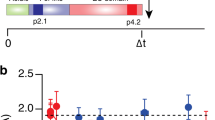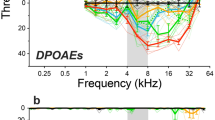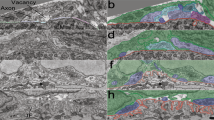Abstract
SYNAPTIC connections in the adult nervous system of several species can be quite flexible and this characteristic has been termed neuronal plasticity. For example, when lesions are made in the axonal pathways of the brains of mature rats, surviving nerve terminals can proliferate and innervate the synaptic sites vacated by the degenerating axons1,2. This “sprouting” occurs in the central nervous system2–4, autonomic nervous system5 and peripheral nervous system6, and seems to be a characteristic response of nervous tissue to partial denervation. In only a few studies has sprouting been reported not to occur7–9. Sprouting of synapses has important implications for the maintenance of neuronal connections and the ability of the nervous system to recover from focal lesions. But several questions need to be answered. For example, are sprouted synapses functional, and if so, do they transmit normally? Is there any specificity in or control over the proliferation of new connections? What initiates and terminates the sprouting? We can now begin to answer these questions. Our studies on the para-sympathetic cardiac ganglion of the frog have shown that synaptic sprouting occurs very rapidly after partial denervation. Furthermore, the number of boutons per cell remains constant throughout sprouting and is the same as the number per cell in control ganglia.
This is a preview of subscription content, access via your institution
Access options
Subscribe to this journal
Receive 51 print issues and online access
$199.00 per year
only $3.90 per issue
Buy this article
- Purchase on Springer Link
- Instant access to full article PDF
Prices may be subject to local taxes which are calculated during checkout
Similar content being viewed by others
References
Raisman, G., Brain Res., 14, 25–48 (1969).
Raisman, G., and Field, P. M., Brain Res., 50, 241–264 (1973).
Liu, C.-N., and Chambers, W. W., Archs Neurol. Psychiat., 79, 46–61 (1958).
Lynch, G. S., Matthews, D., Mosko, S., Parks, T., and Cotman, C. W., Brain Res., 42, 311–318 (1972).
Murray, J. G., and Thompson, J. W., J. Physiol., Lond., 135, 133–162 (1957).
Edds, M. V., Jr, Q. Rev. Biol., 28, 260–276 (1953).
Raisman, G., Field, P. M., Ostberg, A. J. C., Iversen, L. L., and Zigmond, R. E., Brain Res., 71, 1–16 (1974).
McMahan, U. J., and Purves, D., J. Physiol., Lond. (in the press).
Roper, S., J. Physiol., Lond. (in the press).
McMahan, U. J., and Kuffler, S. W., Proc. R. Soc., B 177, 485–508 (1971).
Akert, K., and Sandri, C., Brain Res., 7, 286–295 (1968).
Dennis, M. J., Harris, A. J., and Kuffler, S. W., Proc. R. Soc., B 177, 509–539 (1971).
Author information
Authors and Affiliations
Rights and permissions
About this article
Cite this article
COURTNEY, K., ROPER, S. Sprouting of synapses after partial denervation of frog cardiac ganglion. Nature 259, 317–319 (1976). https://doi.org/10.1038/259317a0
Received:
Accepted:
Issue Date:
DOI: https://doi.org/10.1038/259317a0
This article is cited by
-
Evidence for bilateral vagal innervation of postganglionic parasympathetic neurons in chicken heart
Journal of Neural Transmission (1983)
-
Decentralisation of neurones in the pelvic ganglion of the guinea-pig: Reinnervation by adrenergic nerves
Cell and Tissue Research (1983)
-
Disorganised and ‘excessive’ reinnervation of frog cardiac ganglia
Nature (1978)
-
Formation of synapses between parasympathetic neurones deprived of preganglionic innervation
Nature (1977)
-
Sprouting and regeneration of synaptic terminals in the frog cardiac ganglion
Nature (1976)
Comments
By submitting a comment you agree to abide by our Terms and Community Guidelines. If you find something abusive or that does not comply with our terms or guidelines please flag it as inappropriate.



